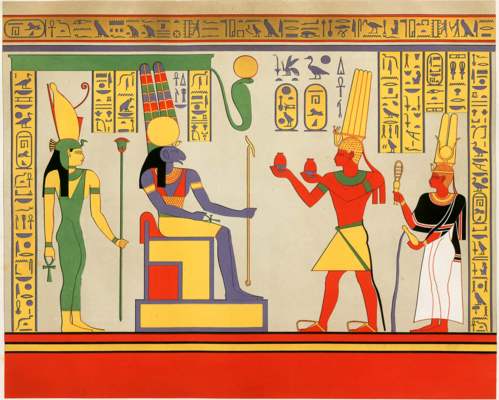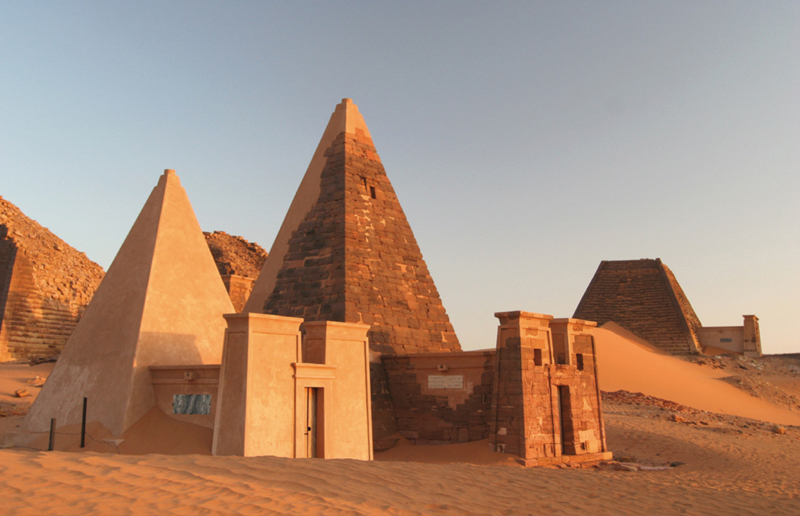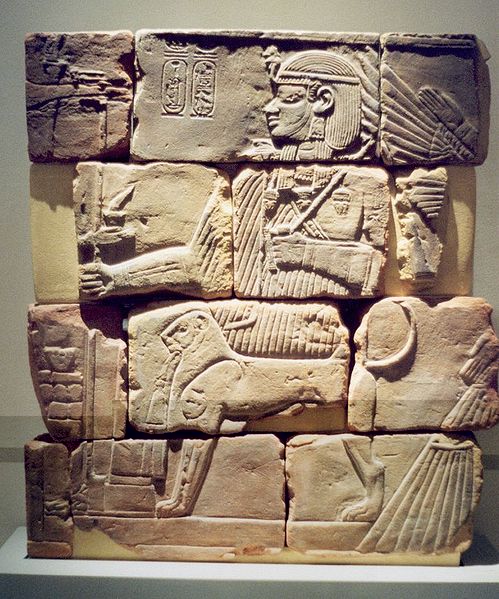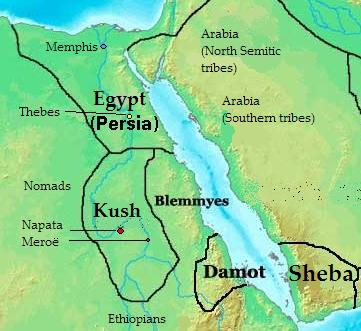The amazing Kingdom of Kush

You've probably heard of the kingdom of the pharaohs, the empire in ancient Egypt. But did you know, that there was another empire, south of Egypt? It was called the Kingdom of Kush, an ancient civilisation in Nubia. It was located located in what is now Sudan. It was already in existence during the time of Egypt's Old Kingdom. The region was called the "Land of the Bow" because of its excellent archers. Their weapon, the arrow and the bow became a symbol for Nubia. Nubians were very important for the development of the Egypt Kingdom. The gold, ebony and ivory of Nubia contributed to the wealth of Egypt. Many of the treaures of the Egyptian kings were made of products from Nubia. In the picture on the right you see the Nubian pharao Taharqa and his wife.
The Rise of the Kingdom of Kush
Historians talk about two Kushite kingdoms. The first Kingdom of Kush was also known as Kerma, because it developed around the settlement of Kerma, in Upper Nubia. The Kushites lived on livestock and farming. They had round hut dwellings with circular tombs. Later, they developed into a trade-based society. The kingdom arose around 2,400 BC. It was built on gold and iron. The Kushites had access to gold mines and traded with its northern neighbors. They built a sprawling city with a white temple. The Kushites became wealthy and influential. The burials of their kings were accompanied with human and animal sacrifice. The first Kingdom of Kush reached its zenith between 1750 - 1500 BC. It came to an end, when Egypt's kingdoms united and thereby became a superpower on the Nile. The Egyptians dominated the region from the third cataract of the Nile up to the Mediterranean See. They founded the post Napata near by the small mountain Barkal. The foot of Jebel Barkal was thought to be the birthplace of the god Amun. They Egyptians built the tempel of Amun, to mark the southern border of the New Kingdom. Nubia became a colony, ruled by the Egytian pharaos.
The golden Days of Kush

By the eleventh century BC, the Kingdom of Egypt became disintegrated and lost its supremacy over Nubia. The Nubians were able to regain control over Kush. The Viceroys of Kush became independent kings. Many of them were queens. Their Kingdom was centered at Napata, the former Egyptian post. Napata developed into a sprawling city. The contact with Egypt had already shaped Kush culture, though. The Kushites erected pyramids and worshiped many Egyptian gods. Religion played an important role in the lives of the Kushites. Like the Egyptians they believed in the aftlerlife. The priests had become the most important social class in Napata. They declared the laws and communicated with the gods. They could even decide, when it was time for the queens and kings to die. Artisons, scribes and farmers were very well respected, though they were not as powerful as the priests. But they contributed to the wealth of Kush. Laborers, servants and slaves were at the bottom of the society. Kush was famous for its archers and the bow and arrow were often depicted in the art of Kush. This was why Kush was called the "Land of the Bow".
The Kings of Kush conquer Egypt

By 730 BCE, the armies of Kush had conquered Egypt right up to the shores of the Mediterranean. The Kushite Pharoah Piye established the 25th Dynasty in Egypt. The Kushite rule in Egypt was not to last very long, though. In 671 BCE Egypt was invaded by the Assyrians. The most prominent black Pharao was Taharqa. Taharqa was a pharaoh of the 25th dynasty of Egypt and came to power ca. 690 BC, controlling an empire stretching from Sudan to the Levant. By the end of his reign a conflict with the Assyrians had forced him to retreat south, back into Nubia – where he died in 664 BC.
Meroe and the End of Kush

The Kushite kings moved their capital further south from Napata to Meroe. The new capital was located at the crossroads of major trade routes and flourished. The Kushites remained safe behind the desolate landscape south of Aswan. They began to develop a separate language and variant architecture. Meroe also became a centre for ironworking, an important income at that time. The civilisations north of Nubia were still hungry for gold, but they also demanded iron weapons and tools. The wealth of the Nubians grew, and also their kingdom gained more influence in the ancient world. Meroe became so famous for its wealth in ancient times that the Persian King Cambyses mounted an expedition to capture it. But his armies couldn't cope with the harsh conditions of the arid landscape. The Persian King never made it to Meroe. By 100 AD Kush began to fade as a power by the decline of its traditional industries. Finally it was destroyed by the emerging kingdom of Axum in 400 AD.


